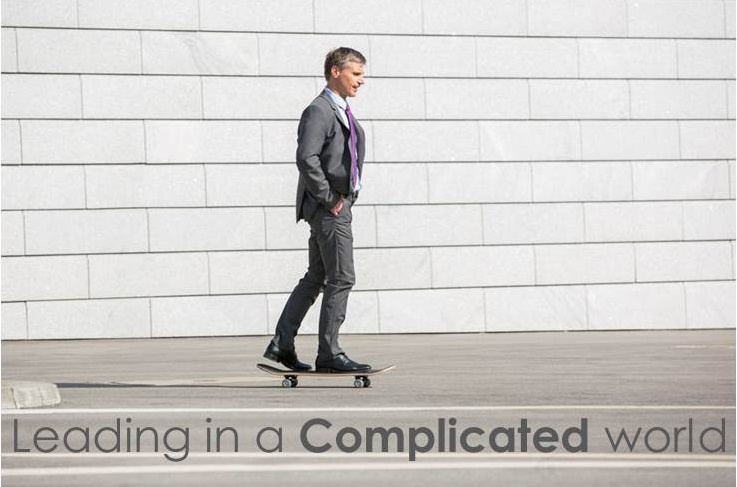In a COMPLICATED WORLD, the environment was stable and predictable enough that we could analyze what had happened and predict future outcomes. The movement patterns were linear.
LEADERS were typically expected to:
- have answers to questions based on their knowledge and experience
- clearly define the problems at hand tracing a cause-and-effect sequence of choices, decisions, actions, and events.
- develop clear visions for the future
- make a step-by-step plan and design clear strategies for making things happen.
In a COMPLEX WORLD, the ground beneath our feet is constantly shifting and very little is stable or predictable. There are many moving pieces and many different opinions about what the outcomes should be. The movement patterns are circular and erratic.
LEADERS are expected to:
- learn to be comfortable in the “not knowing,” instead of having all of the answers.
- have a greater capacity for awareness and understanding
- be intuitive, creative, imaginative, innovative, flexible and resilient
- perceive beyond the obvious, make the connections between the many things that are shifting at the same time and be able to respond quickly to what is happening.
If you want to know how to develop these new Leadership skills for leading in a Complex world, come to:
Transformational Presence: Leadership in Action, by Alan Seale
February 10 -12 Barcelona



Join the conversation